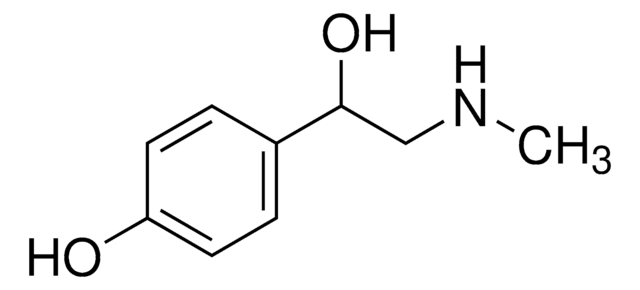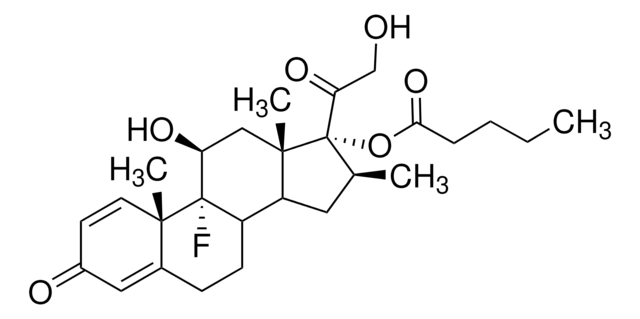M4773
Metaraminol (+)-bitartrate salt
Synonym(s):
(−)-m-Hydroxyphenylpropanolamine bitartrate salt
About This Item
Recommended Products
originator
Merck & Co., Inc., Kenilworth, NJ, U.S.
SMILES string
O[C@H]([C@@H](O)C(O)=O)C(O)=O.C[C@H](N)[C@H](O)c1cccc(O)c1
InChI
1S/C9H13NO2.C4H6O6/c1-6(10)9(12)7-3-2-4-8(11)5-7;5-1(3(7)8)2(6)4(9)10/h2-6,9,11-12H,10H2,1H3;1-2,5-6H,(H,7,8)(H,9,10)/t6-,9-;1-,2-/m01/s1
InChI key
VENXSELNXQXCNT-IJYXXVHRSA-N
Looking for similar products? Visit Product Comparison Guide
Application
Biochem/physiol Actions
Metaraminol may serve as a false sympathetic transmitter. It is a mixed α - and β-adrenergic agonist.
Features and Benefits
Signal Word
Danger
Hazard Statements
Precautionary Statements
Hazard Classifications
Acute Tox. 3 Dermal - Acute Tox. 3 Inhalation - Acute Tox. 3 Oral
Storage Class Code
6.1C - Combustible acute toxic Cat.3 / toxic compounds or compounds which causing chronic effects
WGK
WGK 3
Personal Protective Equipment
Certificates of Analysis (COA)
Search for Certificates of Analysis (COA) by entering the products Lot/Batch Number. Lot and Batch Numbers can be found on a product’s label following the words ‘Lot’ or ‘Batch’.
Already Own This Product?
Find documentation for the products that you have recently purchased in the Document Library.
Our team of scientists has experience in all areas of research including Life Science, Material Science, Chemical Synthesis, Chromatography, Analytical and many others.
Contact Technical Service







